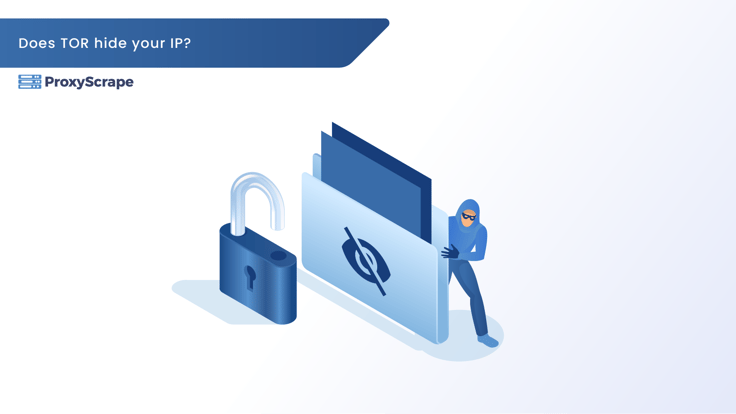
TOR, or The Onion Router, is free and open-source software that protects your identity and anonymity when you browse the internet. It conceals your location, activity, and IP address to prevent surveillance, traffic monitoring, and other threats to your online privacy and security.
TOR is widely used for both legitimate and illegitimate purposes, such as anonymous browsing, secure communication, and bypassing internet censorship. But how does it actually work, and what are the benefits and risks of using TOR?
In this comprehensive guide, we’ll explore the inner workings of TOR and its various applications, as well as compare it to using a VPN. We’ll also answer some commonly asked questions about TOR to help you make an informed decision about whether it’s right for you.
TOR is like a normal web browser, but with added features and capabilities that help you stay anonymous online. It directs your traffic randomly through a network of servers worldwide and wraps the request in several layers of encryption to keep it safe from others.
TOR makes use of the TOR network to protect your privacy and anonymity. The TOR network has two properties:
TOR browser also prevents websites from identifying you based on your browser configuration. By default, TOR Browser does not maintain any cookies that contain your browsing history. The cookies from the websites are valid only for a single session until you exit TOR.
TOR hides your IP whenever you request to contact a web server. It does this by encrypting the request from the client and making it difficult for anyone to know your IP. TOR has a network of volunteer relay systems worldwide to assist with this process.
The relay systems direct internet traffic through free, worldwide, and volunteer overlay networks with more than 6,000 relays. When you send your request through TOR, the data path is not always the same, as your request can travel through any of the relay nodes to reach the destination.
Here’s how the process works:
The TOR browser disguises your online identity by forwarding your requests across different TOR servers. It applies encryption at each relay node, which creates layers of encryption, hence the name “onion.” TOR creates these layers of encryption with a maze of middle relays, end relays, and bridges.
By routing your traffic through multiple layers of encryption and randomly selecting the path it takes, TOR makes it virtually impossible for anyone to trace your online activity or IP address.
TOR provides a high level of anonymity, but it’s not foolproof. While it can hide your IP address and make it difficult to track your online activity, it doesn’t guarantee complete anonymity.
There are a few potential risks and limitations to consider:
While TOR is a powerful tool for protecting your privacy and security online, it’s important to use it responsibly and be aware of its limitations.
TOR has a variety of uses beyond just anonymous browsing, such as:
TOR and proxy servers can be used together to provide an extra layer of protection and anonymity. A proxy server acts as an intermediary between your device and the internet, forwarding your request to the destination server and returning the response back to you.
When you use a proxy server in combination with TOR, your request is first sent to the proxy server, which then forwards it to a randomly selected TOR relay. The TOR relay then sends it on to the destination server, and the response is sent back through the same path in reverse.
This setup provides an additional layer of encryption and anonymity, as the proxy server hides your IP address from the TOR network, and the TOR network hides your IP address from the destination server.
When it comes to finding the best proxy server for your online tasks, there are a few key factors to consider:
Here are some commonly asked questions about TOR:
TOR is a powerful tool for protecting your privacy and anonymity online, but it’s important to use it responsibly and be aware of its limitations. By routing your traffic through multiple layers of encryption and randomly selecting the path it takes, TOR makes it virtually impossible for anyone to trace your online activity or IP address.
TOR has a variety of uses beyond just anonymous browsing, such as secure communication, bypassing internet censorship, and protecting your identity. It can also be used in combination with a proxy server to provide an extra layer of protection and anonymity.
When choosing a proxy server to use with TOR, consider factors such as location, speed, security, compatibility, and cost. And always remember to use TOR and any other online tools with caution and respect the laws of your country.